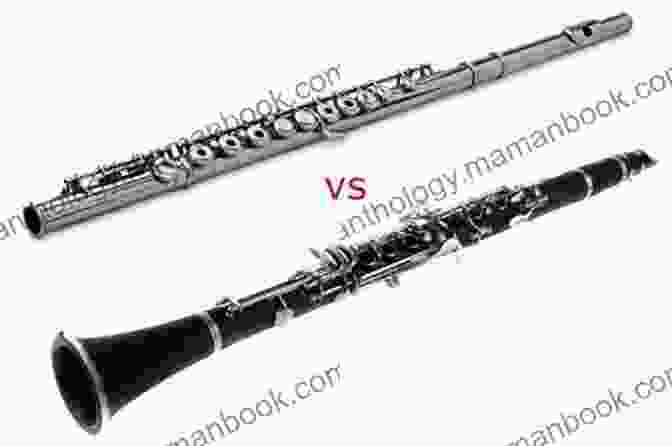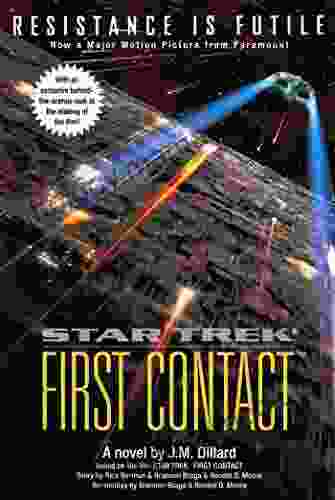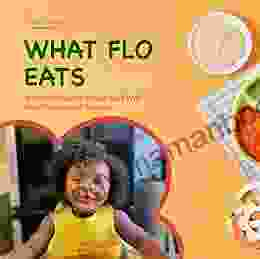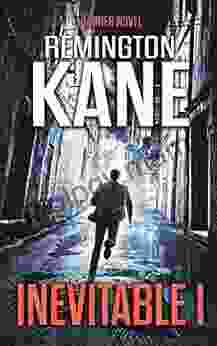Unveiling the Enchanting World of Impromptu Music for Flute, Oboe, Clarinet, and Harp


In the realm of chamber music, impromptu performances hold a captivating allure, characterized by their spontaneity, creativity, and intimate connection between musicians. And when it comes to improvisational ensembles, the combination of flute, oboe, clarinet, and harp creates an unparalleled tapestry of sound that weaves together elegance, virtuosity, and lyrical beauty.
4.8 out of 5
| Language | : | English |
| File size | : | 7050 KB |
| Text-to-Speech | : | Enabled |
| Screen Reader | : | Supported |
| Enhanced typesetting | : | Enabled |
| Print length | : | 22 pages |
| Lending | : | Enabled |
In this article, we will delve into the enchanting world of impromptu music for these four instruments, exploring its origins, repertoire, and techniques while showcasing the artistry of renowned musicians who have graced this genre.
Origins and Evolution
The origins of impromptu music can be traced back centuries to the era of courtly entertainment, where musicians would gather to perform spontaneous compositions based on popular themes or melodies. As music evolved during the Baroque and Classical periods, the practice of improvisation became increasingly formalized, with structured forms and cadenzas providing opportunities for musicians to display their improvisational skills.
In the 19th century, impromptu performances gained prominence as a means of showcasing the virtuosity and imagination of soloists. Composers such as Franz Schubert and Frédéric Chopin penned numerous impromptu pieces that challenged performers to explore the expressive possibilities of their instruments.
The Ensemble of Flute, Oboe, Clarinet, and Harp
The combination of flute, oboe, clarinet, and harp in impromptu music offers a unique blend of tonal colors and textures. Each instrument possesses distinct characteristics:
* Flute: With its clear and agile sound, the flute provides a shimmering and ethereal presence, capable of soaring melodies and intricate passages. * Oboe: Known for its expressive and distinctive tone, the oboe adds a touch of warmth and lyricism to the ensemble, particularly in the upper registers. * Clarinet: The versatile clarinet contributes a wide range of colors, from mellow and soulful to bright and playful, offering both melodic and harmonic support. * Harp: The harp's delicate and resonant sound adds a touch of magic and enchantment to the ensemble, providing harmonic and atmospheric support while creating a shimmering backdrop for the winds.
Together, these four instruments create a captivating sound world that allows for endless possibilities of improvisation and exploration.
Repertoire and Performance Practices
Impromptu music for flute, oboe, clarinet, and harp draws inspiration from a vast repertoire of sources, including folk melodies, popular tunes, and original compositions. Performers may choose to improvise based on a given theme, such as a chord progression or a rhythmic pattern, or they may create entirely spontaneous compositions in real time.
Various performance practices shape the character of impromptu performances. Some ensembles prefer a highly structured approach, following predetermined harmonic and melodic frameworks. Others embrace a more free and intuitive style, allowing their improvisations to unfold organically in response to the moment.
Techniques of Improvisational Virtuosity
Impromptu performances demand exceptional musicianship and technical prowess from all participants. Here are some key techniques employed by these virtuosos:
* Melodic Variation: Performers may embellish and develop melodic lines, adding ornamentation, altering rhythms, and exploring different intervals. * Harmonic Exploration: Improvisers experiment with chord progressions, creating unexpected harmonies and modulations to enhance the emotional impact of their performances. * Rhythmic Displacement: By shifting accents and altering the flow of time, improvisers create a sense of syncopation and rhythmic vitality. * Counterpoint and Imitation: Performers engage in intricate counterpoint, where individual voices weave together independently while maintaining harmonic coherence. * Call and Response: Musicians may use call and response techniques, where one instrument presents a melodic or rhythmic phrase that is then answered by another.
Renowned Musicians
Throughout history, numerous musicians have made significant contributions to the genre of impromptu music. Here are a few notable artists:
* Jean-Pierre Rampal (Flute): A legendary flutist known for his virtuosity and improvisational skills, Rampal frequently collaborated with other wind players in impromptu performances. * Heinz Holliger (Oboe): A Swiss oboist and conductor renowned for his expressive playing and innovative approaches to improvisation. * Sabine Meyer (Clarinet): Recognized as one of the world's leading clarinetists, Meyer is known for her lyrical interpretations and her ability to communicate emotions through her playing. * Anneleen Lenaerts (Harp): A Belgian harpist celebrated for her virtuosity and her work in contemporary music, Lenaerts often incorporates improvisation into her performances.
Impromptu music for flute, oboe, clarinet, and harp offers a unique and enchanting musical experience that showcases the artistry and spontaneity of these talented musicians. Through their improvisational virtuosity, performers create moments of magic that captivate audiences and leave lasting impressions. As this genre continues to evolve, we can anticipate even more innovative and extraordinary performances from ensembles around the world.
4.8 out of 5
| Language | : | English |
| File size | : | 7050 KB |
| Text-to-Speech | : | Enabled |
| Screen Reader | : | Supported |
| Enhanced typesetting | : | Enabled |
| Print length | : | 22 pages |
| Lending | : | Enabled |
Do you want to contribute by writing guest posts on this blog?
Please contact us and send us a resume of previous articles that you have written.
 Top Book
Top Book Novel
Novel Fiction
Fiction Nonfiction
Nonfiction Literature
Literature Paperback
Paperback Hardcover
Hardcover E-book
E-book Audiobook
Audiobook Bestseller
Bestseller Classic
Classic Mystery
Mystery Thriller
Thriller Romance
Romance Fantasy
Fantasy Science Fiction
Science Fiction Biography
Biography Memoir
Memoir Autobiography
Autobiography Poetry
Poetry Drama
Drama Historical Fiction
Historical Fiction Self-help
Self-help Young Adult
Young Adult Childrens Books
Childrens Books Graphic Novel
Graphic Novel Anthology
Anthology Series
Series Encyclopedia
Encyclopedia Reference
Reference Guidebook
Guidebook Textbook
Textbook Workbook
Workbook Journal
Journal Diary
Diary Manuscript
Manuscript Folio
Folio Pulp Fiction
Pulp Fiction Short Stories
Short Stories Fairy Tales
Fairy Tales Fables
Fables Mythology
Mythology Philosophy
Philosophy Religion
Religion Spirituality
Spirituality Essays
Essays Critique
Critique Commentary
Commentary Glossary
Glossary Bibliography
Bibliography Index
Index Table of Contents
Table of Contents Preface
Preface Introduction
Introduction Foreword
Foreword Afterword
Afterword Appendices
Appendices Annotations
Annotations Footnotes
Footnotes Epilogue
Epilogue Prologue
Prologue Brad W King
Brad W King Nadria Tucker
Nadria Tucker Carla A Norde
Carla A Norde George Manos
George Manos River Jackson
River Jackson Randee Bergen
Randee Bergen Jack Whyte
Jack Whyte Phillipa Ashley
Phillipa Ashley Teddy Crispin
Teddy Crispin Shae Marie
Shae Marie Phil Cohen
Phil Cohen David Mamet
David Mamet Quentin Blake
Quentin Blake Paul Kendall
Paul Kendall Wish Ronquillo Peacocke
Wish Ronquillo Peacocke Clement Clarke Moore
Clement Clarke Moore Alison Scott Wright
Alison Scott Wright Eddie Davila
Eddie Davila J Lynn Hicks
J Lynn Hicks Rm Vaughan
Rm Vaughan
Light bulbAdvertise smarter! Our strategic ad space ensures maximum exposure. Reserve your spot today!

 Yukio MishimaUnveiling the Enigmatic Tregenna Hill Altars: An Exploration of Symbolism and...
Yukio MishimaUnveiling the Enigmatic Tregenna Hill Altars: An Exploration of Symbolism and...
 Dalton FosterEmpowering Teens and Young Adults with Mindfulness Skills to Navigate Anxiety...
Dalton FosterEmpowering Teens and Young Adults with Mindfulness Skills to Navigate Anxiety...
 Jonathan FranzenFirst Contact: A Comprehensive Exploration of the Landmark Star Trek Film
Jonathan FranzenFirst Contact: A Comprehensive Exploration of the Landmark Star Trek Film Michael ChabonFollow ·18.2k
Michael ChabonFollow ·18.2k Roberto BolañoFollow ·2.2k
Roberto BolañoFollow ·2.2k Austin FordFollow ·14.8k
Austin FordFollow ·14.8k Devin RossFollow ·3.8k
Devin RossFollow ·3.8k Mark MitchellFollow ·14k
Mark MitchellFollow ·14k Stephen KingFollow ·19.7k
Stephen KingFollow ·19.7k Grant HayesFollow ·17.5k
Grant HayesFollow ·17.5k Rick NelsonFollow ·11.5k
Rick NelsonFollow ·11.5k

 Vernon Blair
Vernon BlairThe Woman I Met in My Dream: An Unforgettable Night of...
As the veil of night...

 Carlos Fuentes
Carlos FuentesThe Ultimate Guide to Healthy Eating for Toddlers: Meal...
As a parent of a...

 Peter Carter
Peter CarterInside My Autistic Mind: A Journey of Self-Discovery and...
Autism spectrum disorder (ASD) is a...

 Isaac Asimov
Isaac AsimovA Journey Through Jane Austen's Literary Masterpieces:...
Jane Austen, the renowned English...

 Hank Mitchell
Hank MitchellAdvancements in Textiles: Science and Technology by...
The textile...

 Troy Simmons
Troy SimmonsRecovery Road: An Odyssey of Hope and Redemption by...
Recovery Road is a...
4.8 out of 5
| Language | : | English |
| File size | : | 7050 KB |
| Text-to-Speech | : | Enabled |
| Screen Reader | : | Supported |
| Enhanced typesetting | : | Enabled |
| Print length | : | 22 pages |
| Lending | : | Enabled |






